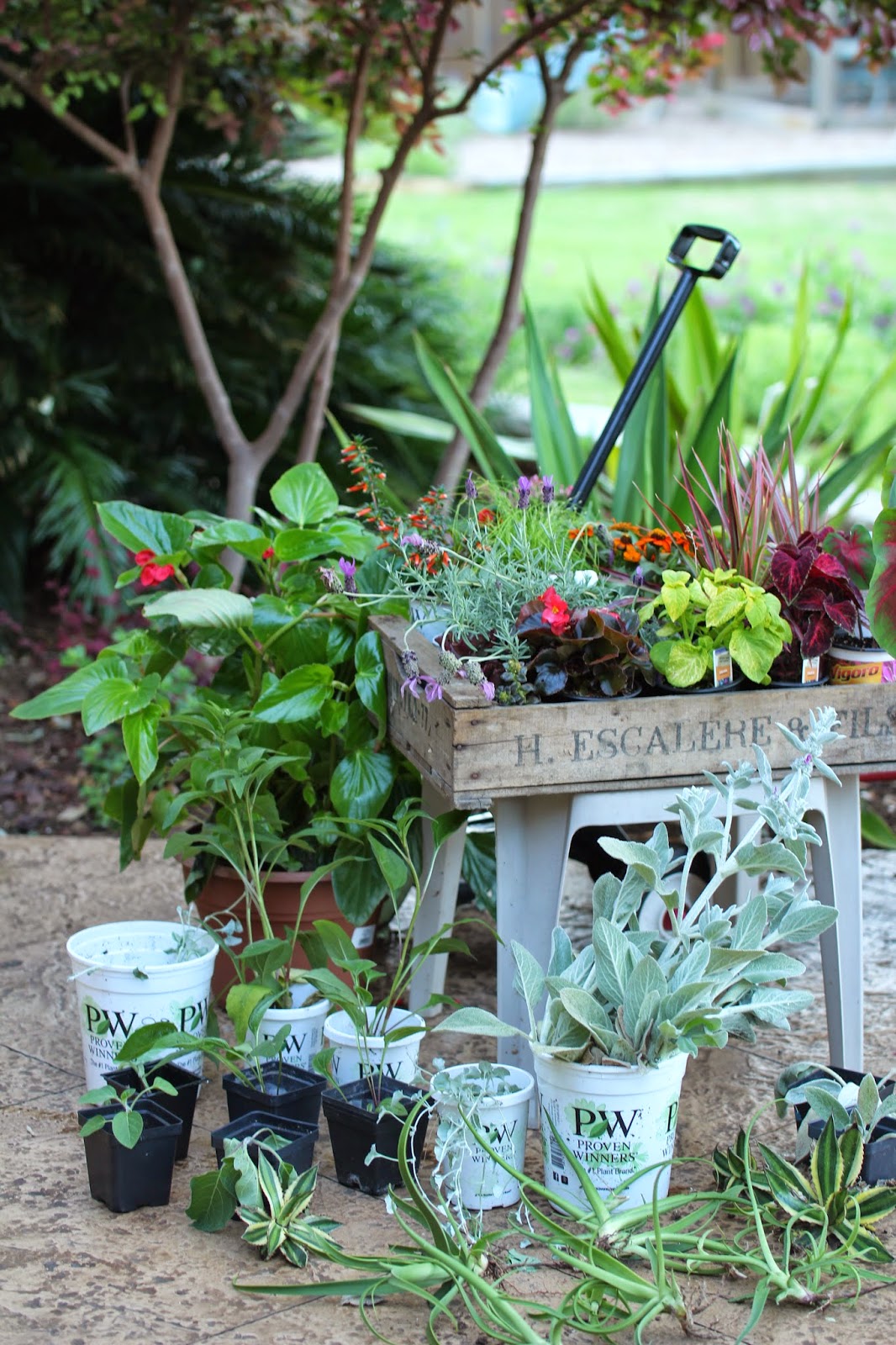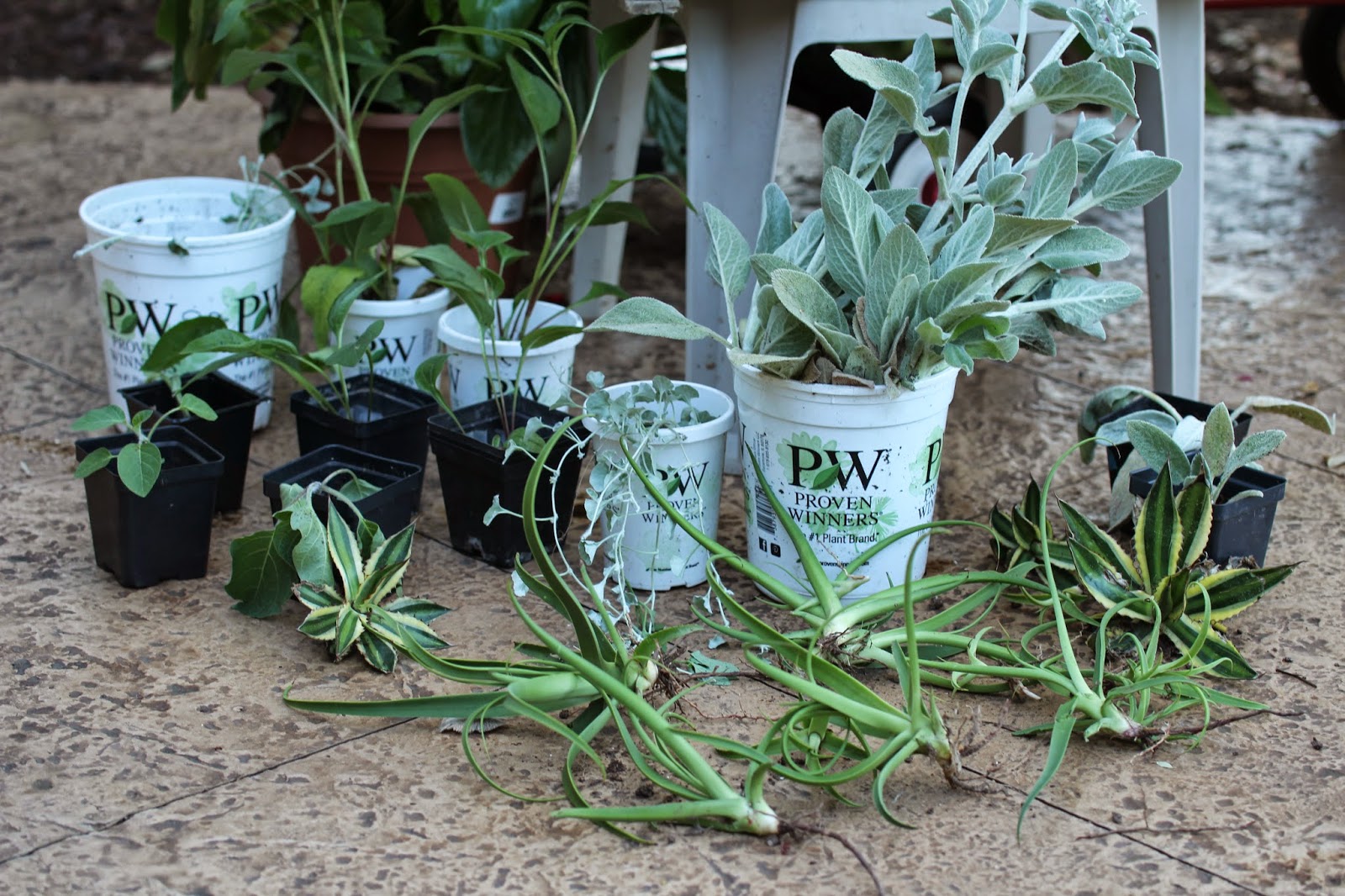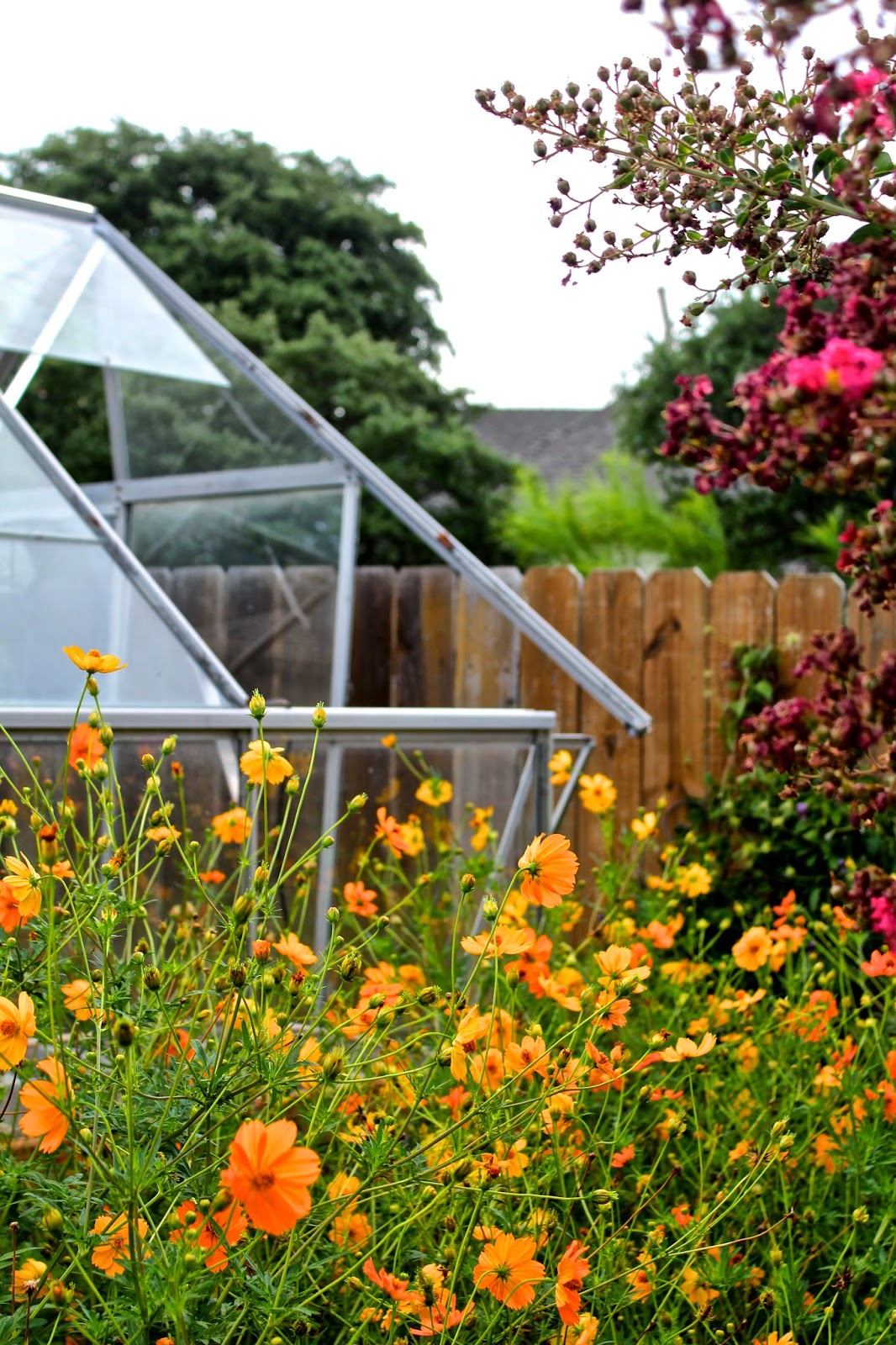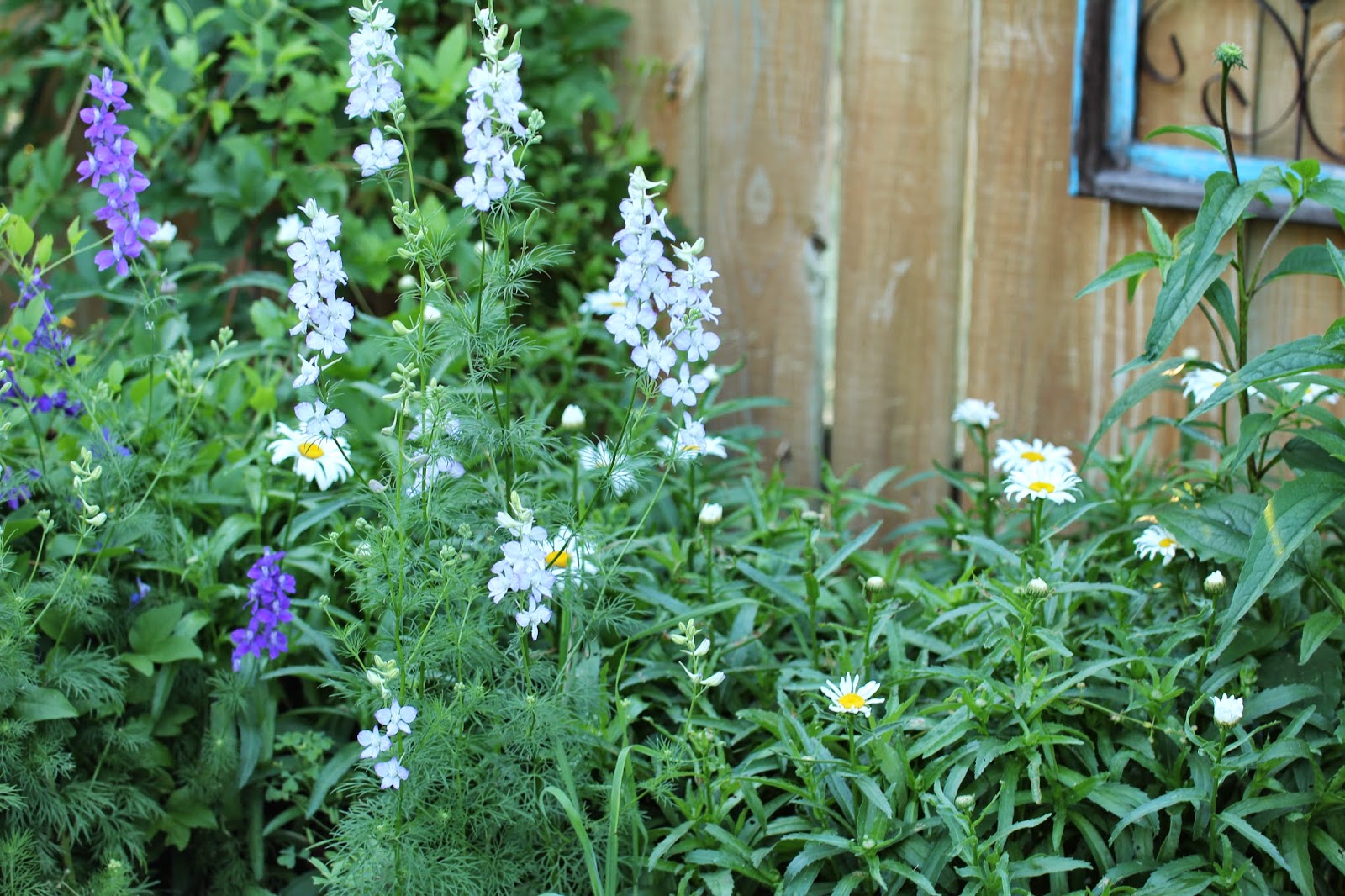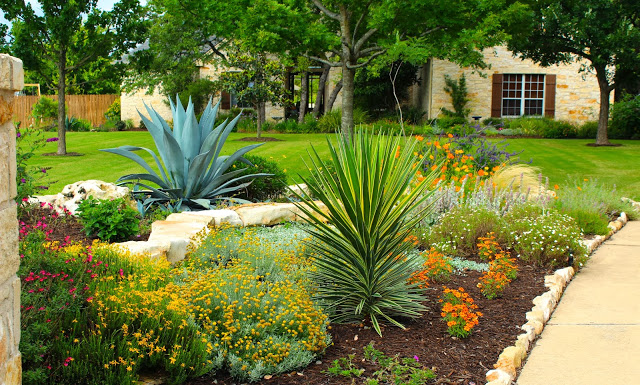Spring flowers scattered around my garden on Garden Bloggers Bloom Day
We’ve had a tumultuous winter and spring. Well, it isn’t officially spring, but here in Central Texas, spring starts in February. We’ve already had a 91-degree day, then a week or so after that we had a low of 21. It was the first hard freeze of the winter in my garden. Of course, everything had already started to sprout and put on buds. We love the warm days, but then we pay for it.
Today is Garden Bloggers Bloom Day, hosted by Carol at May Dreams Gardens, so we can see what’s blooming around the world today.
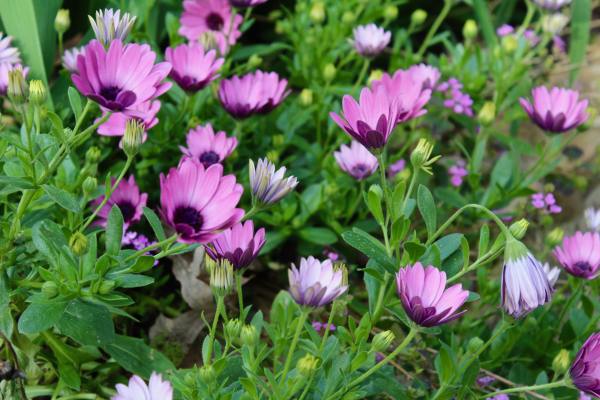
I covered for the 21-degree freeze. I normally don’t do that any more — it’s just too much work. But we’re getting things ready to put our house on the market and move up to northwest Austin and I’d really rather not have to replace plants and fill holes. (And, I want to take some of the great plants with me!)
Nonetheless, there are things blooming in the garden, in spite of the yo-yoing weather. I planted these Ostespermum, African daisy, late summer last year and I’m getting another round be beautiful blooms.
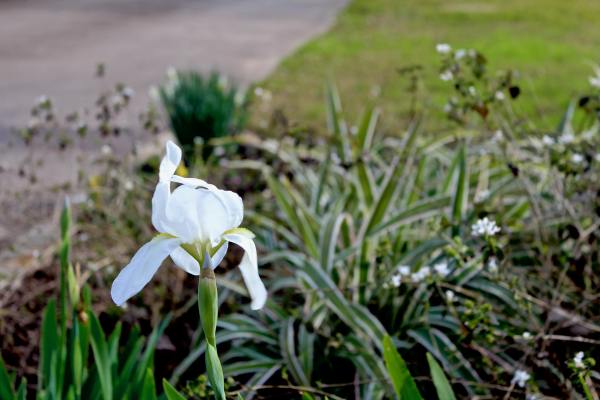
These pass-along white cemetery iris bloom first among all the iris in the garden. They’ve made the rounds among most of the Austin garden bloggers so they brighten gardens all around town.
I can always count on the bulbs and love the daffodils in my garden.
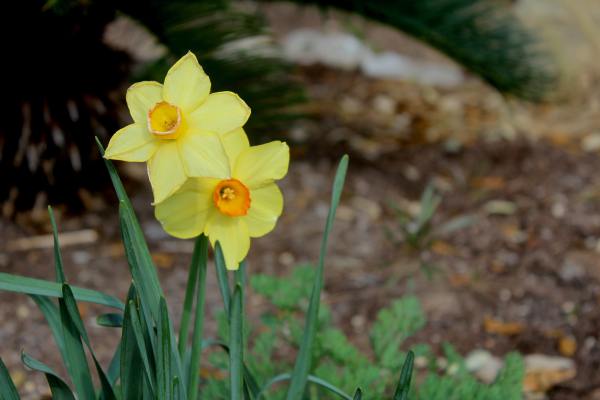 I’ve had these in the garden for a long time. It’s called yellow fortune. The contrast of the almost orange cup with the bright yellow makes a colorful display. I’ve taken to collecting different varieties of daffodils over the years. It’s fun to see who comes up each year.
I’ve had these in the garden for a long time. It’s called yellow fortune. The contrast of the almost orange cup with the bright yellow makes a colorful display. I’ve taken to collecting different varieties of daffodils over the years. It’s fun to see who comes up each year.
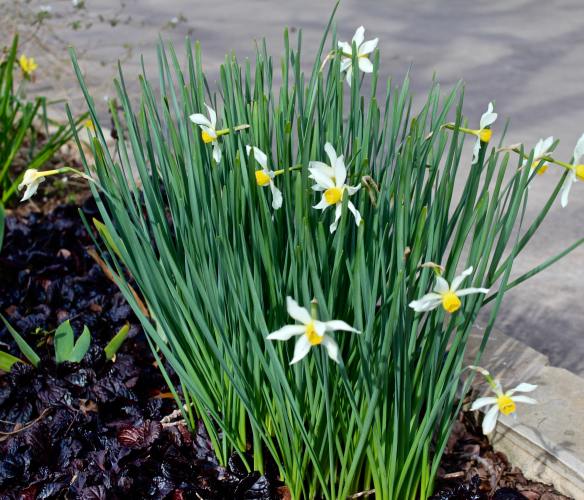
These ice follies have naturalized and definitely need to be divided. Hmmm…a good opportunity to take some with me to a new garden once we find a house.
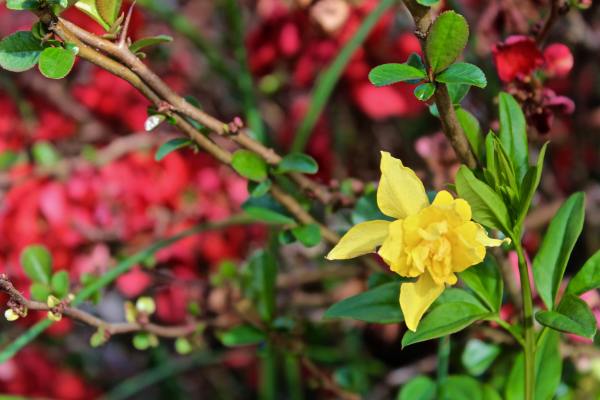
The flowering quince makes a lovely backdrop for these frilly, delicate daffodils, called double campernelle. She’s getting lost in the quince and the primrose jasmine beside her, so I may have to rescue her and bring her with me as well. (See how I keep adding to my list?)
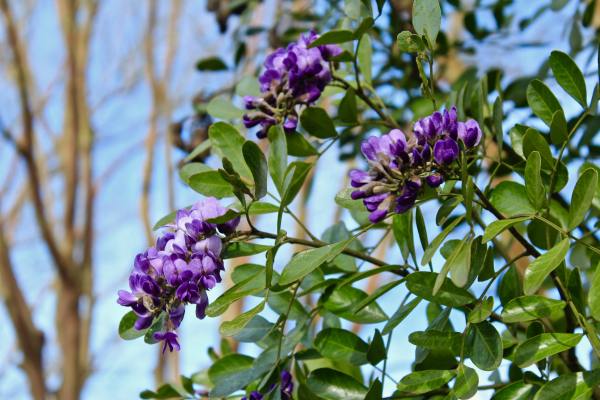
The native Texas Mountain Laurels continue to bloom – only the open blooms succumbed to the cold.
Some of the trees hadn’t even produced buds yet, so I will get to enjoy the Kool-Aid, grapey-goodness scent of these beautiful evergreen trees for weeks to come. And, when brought into the house as part of a cut flower bouquet, I can continue to appreciate Mother Nature’s air freshener!
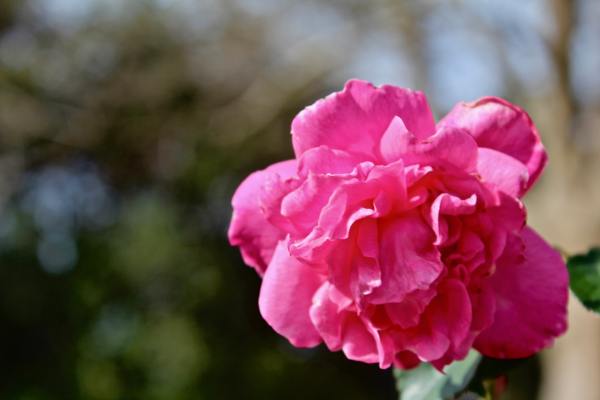
It was hard to cut back the roses when I had several blooms on Archduke Charles, but I brought them inside and pruned the rest.
The four roses in the new rose parterre aren’t all the same height at maturity, so keeping them similar requires careful pruning.
Livin’ easy, grandma’s yellow and ebb tide show no signs of emerging buds yet.
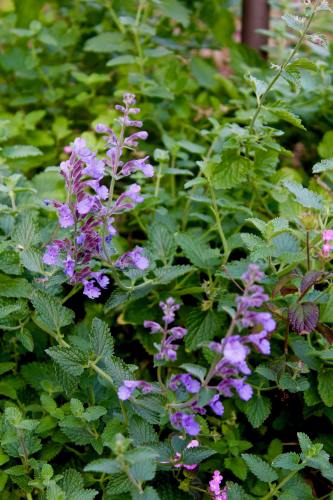
Catmint remains one of my garden favorites. Mostly evergreen with a compact, clearly defined form, it stays orderly in places where I want a small mounding plant.
‘Walkers low’ makes a pretty, reliable border plant, getting only about 12-14″ in my garden. Advertised as getting up to 24″ tall, that’s not my experience and I’ve had them for several years.
I’ve enjoyed them in the front bed and last year expanded their reach into a few other beds as well.
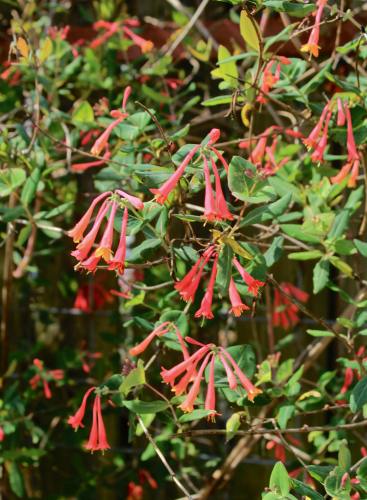
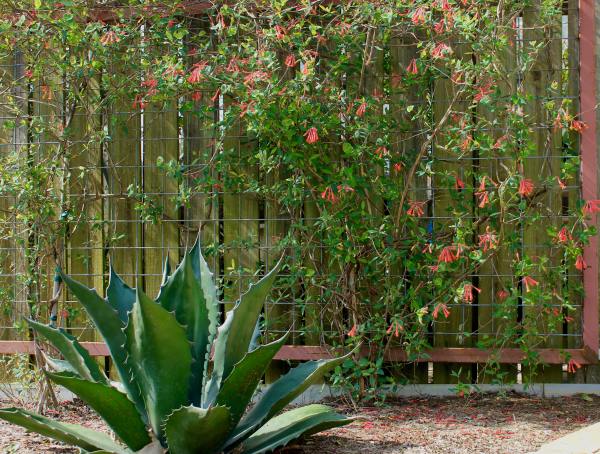
The Mexican honeysuckle on the trellis behind the green goblet agave is awash with coral-y/salmon-y blooms. They grow up into the air and over the fence, draping delicately onto the side of the greenhouse roof.
Hinkley’s columbine has started blooming and brightens up the woodland path garden.
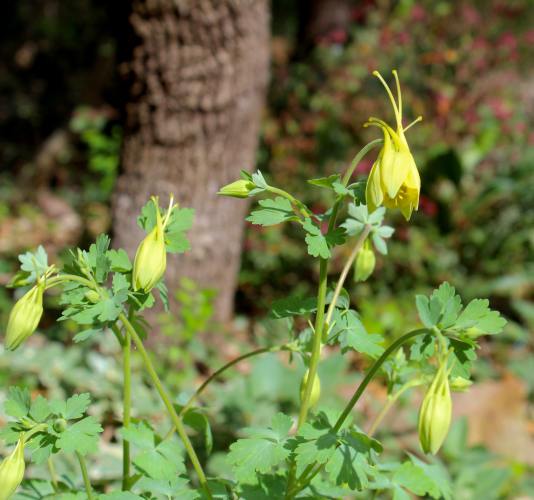
The prairie verbena loves this spot by the street. Hot and dry, this bed bears the brunt of the full, scorching Texas sun. The perennial verbena provides a beautiful, soft contrast to the ginormous squid agave next to it.
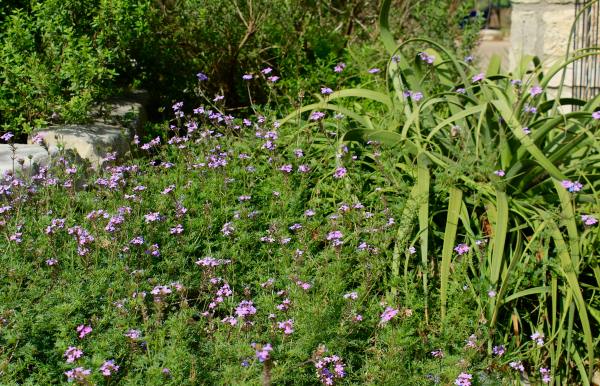
I think we’re finished with freezes here in Central Texas.
I’m ready to start working in the garden and soaking up the spring sunshine.
How ’bout you?

